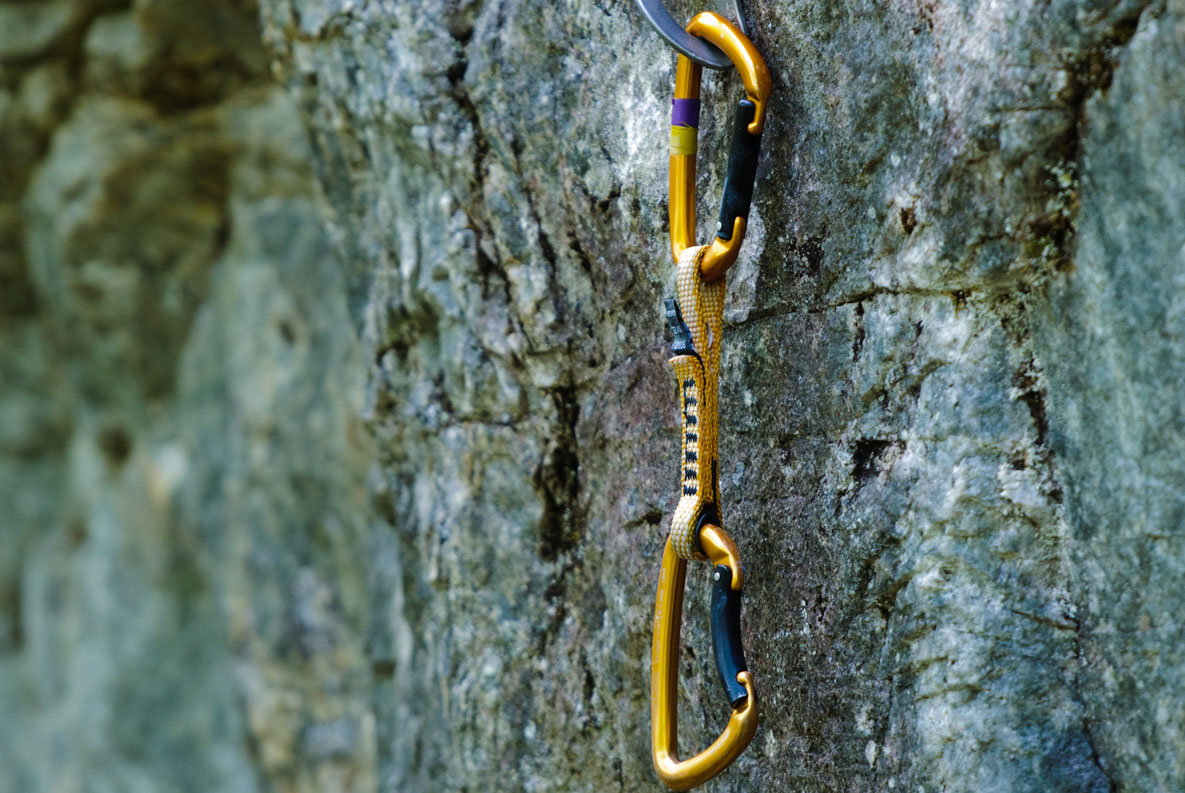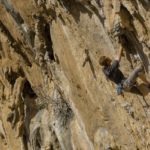Previously, we took a look at Understanding Gear: Shoes, Harnesses, and Belay Devices. Going one step further, this guide will provide an introduction into rock climbing carabiners and quickdraws.
All about rock climbing carabiners
While carabiners initially seem quite simple, there are several important factors to consider when purchasing:

Petzl’s line consists of the four primary carabiner shapes. Pear and asymmetric D-shaped profiles are suitable for most scenarios.
Locking vs. non-locking
In brief, primary applications for locking carabiners are belaying, rappelling, and anchor-building. Non-lockers are primarily used for clipping to quickdraws/trad protection.
Size/weight
For belaying, rappelling, and anchor master points, we recommend a big pear or asymmetric D-shaped locking carabiner (check out the Black Diamond RockLock). However, the larger belay ‘biners can be quite heavy, so it’s smart to supplement with smaller asymmetric D-shaped carabiners such for other locking carabiner needs.
Gate type (lockers)
Locking carabiners feature either screw-lock or auto-locking gates. Auto-lockers are slightly pricier, but they have specialized mechanisms (springs or magnets) to immediately lock when clipped. This is a smart—but not required—choice for one’s primary belay/rappel carabiner.
Gate type (non-lockers)
When purchasing non-lockers, you must choose between having a solid or wire gate, and a straight or bent gate (see quickdraw picture below). In short, solid gates are heavier than wire gates, and bent gates are easier to clip the rope to than straight gates. Thus, on quickdraws use a straight gate for clipping to the bolt, and a bent gate for clipping the rope into.
Strength rating
In a later post we will discuss strength ratings for climbing equipment. For newer climbers, however, simply aim for carabiners with an open gate rating of 9kn (1kn is approximately 225lb of force) or more, as the open gate rating is a carabiner’s weakest point.
Carabiner nose
The noses of carabiners will effect how easily the carabiner can be removed from bolts or protection. With a keylock nose, the carabiner won’t snag upon removal. This is largely a matter of personal preference.
or protection. With a keylock nose, the carabiner won’t snag upon removal. This is largely a matter of personal preference.
Rock Climbing Quickdraws
Consisting of two carabiners and a sewn piece of nylon or dyneema, quickdraws all function in a relatively similar manner. When purchasing, we recommend the following considerations:
Price
If buying your first set, there’s little need to get high performance quickdraws. All major brands have entry-level options, and these are usually an appropriate starting spot. One factor to remember is that regardless of price, quickdraws are all very strong and tested to the same quality standards. High prices tend to come with a slightly lighter weight and/or smoother carabiner gates, but these added benefits are not too important during your first few years.
Weight

This comparison of carabiner gate types features the Sports Draw and the Wildwire Quickdraw by Wild Country.
The weight of quickdraws quickly adds up, but depending on your climbing style this may not be a large issue. If mostly sport climbing, quickdraws of any weight are typically fine. While lighter draws will be less noticeable on your harness, draws with burlier webbing and solid gate constructions are highly durable (useful due to the wear of bolts on carabiners) and have less tendency to twist or wiggle while clipping. Having light quickdraws is of higher importance for trad or alpine climbers who will be carrying large amounts of extra gear.
Quantity and length
The number of quickdraws a climber needs is entirely dependent on the climbing area. A general guideline would be ten standard quickdraws (10cm-12cm) and two to four longer quickdraws (16cm-20cm) to be used for reducing rope drag on winding routes.
Related: The Essential Guide to Buying Your First Climbing Rope
Now to you
Have additional questions about carabiners and quickdraws? Looking for recommendations to suit your needs? Leave a comment below!








